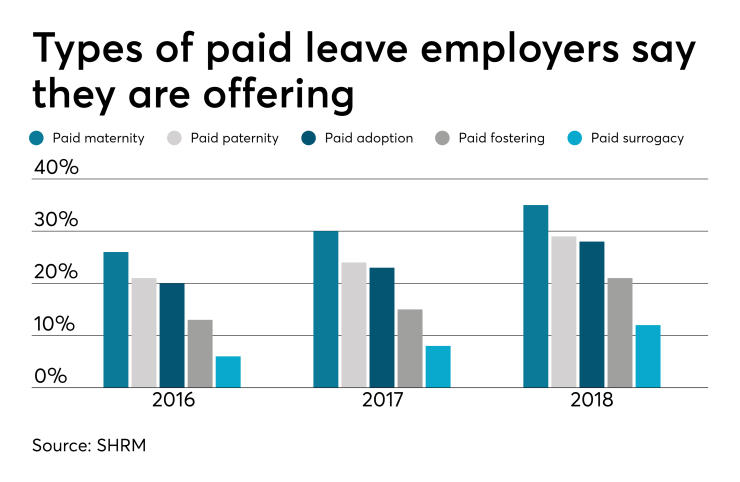First, the bad news: Little has changed at the federal level in the past 25 years when it comes to family leave. The vast majority of America’s workers still have no access to paid parental leave benefits. A staggeringly low 15% now enjoy this protection.
But more states, municipalities and clients have taken the initiative to close this yawning void, enacting their own paid benefits. These entities are making some progress, but will federal legislation catch up with this growing, more grassroots trend to guarantee paid family leave for America’s workers?
The good news is … maybe. We’ve seen recent signs of positive movement on both sides of the political aisle. Why and why now? One reason may the growing focus on gender inequality.
“People are starting to see the issue of parental leave and gender bias as one and the same,” Wharton School management professor Stephanie Creary said in a recent

Upcoming elections also are likely creating new energy, as politicians strive to appeal to women voters. At last count nearly half a dozen proposals are now circulating on Capitol Hill:
- A group of Democratic senators has reintroduced the Family and Medical Insurance Leave Act. Originally introduced in 2015 by U.S. Sen. Kirsten Gillibrand, D-N.Y., and U.S. Rep. Rosa DeLauro, D-Conn., the Family Act aims to pick up where the FMLA left off by creating an insurance program funded by joint contributions from workers and employers via a new 0.4% payroll tax. The legislation would provide up to 12 weeks of partial income for workers with serious health conditions, including pregnancy and childbirth recovery; the serious health condition of a child, parent, spouse or domestic partner; the birth or adoption of a child; or certain military caregiving and leave purposes. It would enable workers to earn up to 66% of their monthly wages and cover workers in all size companies, including younger, part-time, lower-wage, contingent and self-employed workers. The plan would be administered through a new Office of Paid Family and Medical Leave.
- Economic Security for New Parents Act. This proposal was introduced in August 2018 by U.S. Sen. Rubio, R-Fla., and Rep. Wagner, R-Mo. It’s aimed solely at new parents, creating an opportunity for them to pull forward a portion of their Social Security benefits to use for paid parental leave after the birth or adoption of a child. Later in life, they would delay the date at which they begin receiving Social Security retirement benefits to make up for the amount withdrawn during their leave.
- Child Rearing and Development Leave Empowerment Act. Also known as the
CRADLE Act , this proposal was introduced by U.S. Sen. Joni Ernst, R-Iowa, and U.S. Sen. Mike Lee, R-Utah. Like the Rubio-Wagner plan, it would allow new parents to choose between one and three months of paid time off from work by accessing some of their Social Security benefits.
- Workflex in the 21st Century Act. Introduced in November 2017 by U.S. Rep. Mimi Walters, R-Calif., with strong support from the Society for Human Resource Management, this plan focuses more on standardization of paid sick leave. It would be funded solely by employers, not employees, and offering it would be voluntary.
- President Trump’s daughter, Ivanka, was pushing bipartisan agreement on paid family leave earlier this year, favoring a plan is co-sponsored by U.S. Sen. Bill Cassidy, R-La., and U.S. Sen. Kyrsten Sinema, D-Ariz. But advocacy groups criticized the proposal as failing to meet families’ needs and “shortsighted,” according to a
recent Newsweek report . Ellen Bravo, co-director of Family Values at Work, said it “badly underestimates” the financial strain on parents of new children in middle-class families and would exclude 75% of working people who need time off in order to care for someone else with an illness.
Although these proposals vary in their approach and benefits to new parents, they can be seen as steps in the right direction. I’m optimistic we’re getting closer to an effective paid family leave policy. But the question is: When?
And finally, a little more good news: State and municipality paid leave has also led to a parallel rise in employer-paid family leave policies in corporate America. I’ll explore that in my next column.
This is the third in a six-part series on paid parental leave for America’s workers: how it started and where it’s going, who’s doing it well, why it’s such a challenge for employers and employees, and why it’s essential to the long-term economic growth of our country.





